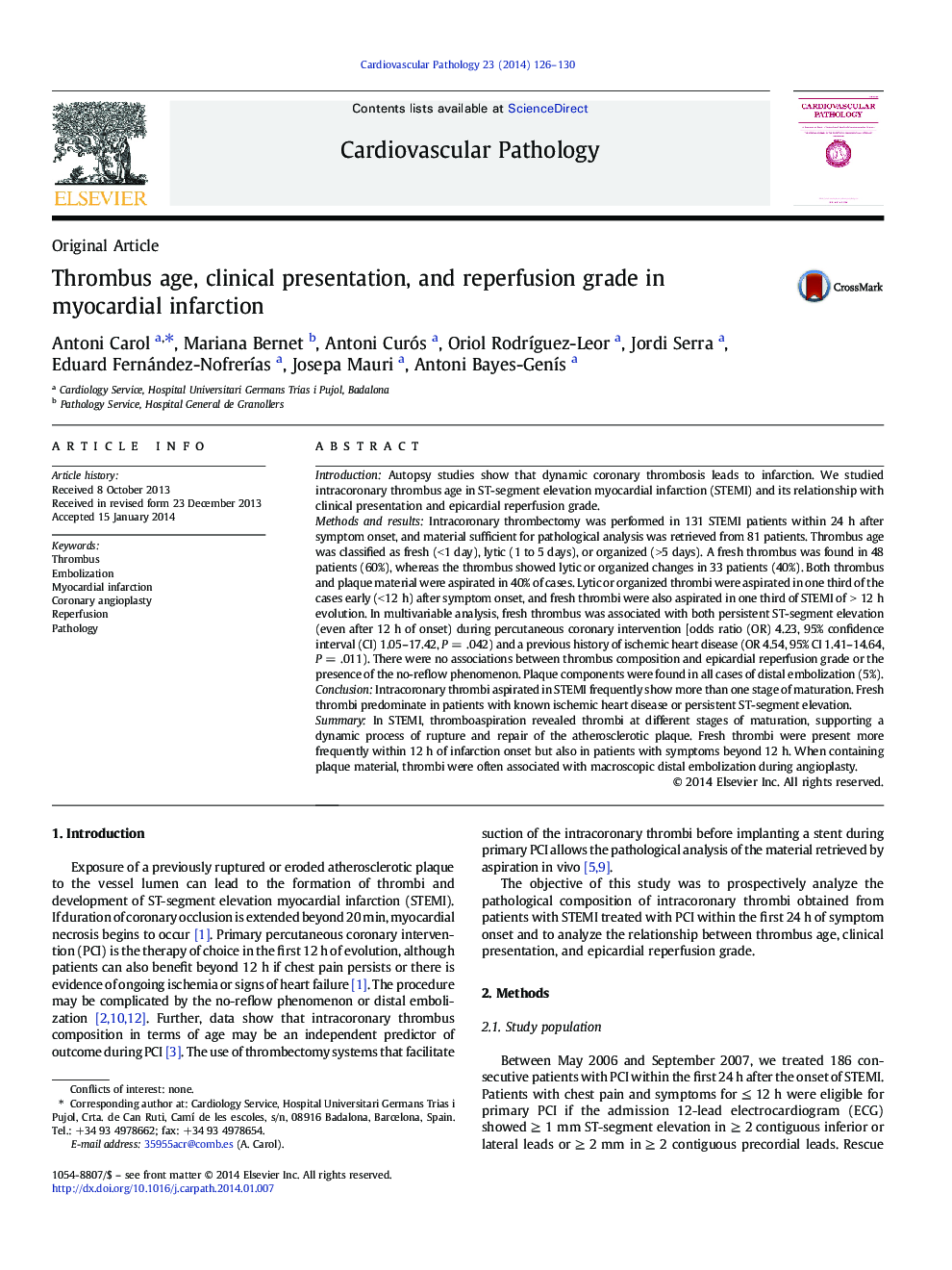| Article ID | Journal | Published Year | Pages | File Type |
|---|---|---|---|---|
| 2898843 | Cardiovascular Pathology | 2014 | 5 Pages |
IntroductionAutopsy studies show that dynamic coronary thrombosis leads to infarction. We studied intracoronary thrombus age in ST-segment elevation myocardial infarction (STEMI) and its relationship with clinical presentation and epicardial reperfusion grade.Methods and resultsIntracoronary thrombectomy was performed in 131 STEMI patients within 24 h after symptom onset, and material sufficient for pathological analysis was retrieved from 81 patients. Thrombus age was classified as fresh (<1 day), lytic (1 to 5 days), or organized (>5 days). A fresh thrombus was found in 48 patients (60%), whereas the thrombus showed lytic or organized changes in 33 patients (40%). Both thrombus and plaque material were aspirated in 40% of cases. Lytic or organized thrombi were aspirated in one third of the cases early (<12 h) after symptom onset, and fresh thrombi were also aspirated in one third of STEMI of > 12 h evolution. In multivariable analysis, fresh thrombus was associated with both persistent ST-segment elevation (even after 12 h of onset) during percutaneous coronary intervention [odds ratio (OR) 4.23, 95% confidence interval (CI) 1.05–17.42, P = .042) and a previous history of ischemic heart disease (OR 4.54, 95% CI 1.41–14.64, P = .011). There were no associations between thrombus composition and epicardial reperfusion grade or the presence of the no-reflow phenomenon. Plaque components were found in all cases of distal embolization (5%).ConclusionIntracoronary thrombi aspirated in STEMI frequently show more than one stage of maturation. Fresh thrombi predominate in patients with known ischemic heart disease or persistent ST-segment elevation.SummaryIn STEMI, thromboaspiration revealed thrombi at different stages of maturation, supporting a dynamic process of rupture and repair of the atherosclerotic plaque. Fresh thrombi were present more frequently within 12 h of infarction onset but also in patients with symptoms beyond 12 h. When containing plaque material, thrombi were often associated with macroscopic distal embolization during angioplasty.
